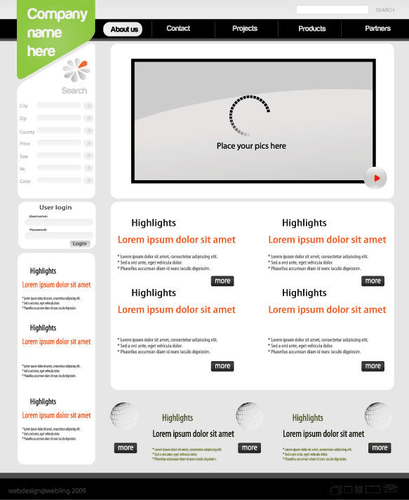Atualizado por último em 5 dias por Agência Nex Step

A higher TIE ratio usually suggests that a company has a more robust financial position, as it signifies a greater capacity to meet its interest obligations comfortably. This, in turn, may make it more attractive to investors and lenders, as it indicates lower default risk. Likewise, stock analysts will monitor the TIE ratio to avoid investing in companies at high risk of financial distress. And accounting company management will keep a close eye on their TIE ratios to ensure they maintain access to affordable capital. A corporation with an overly high TIE ratio, on the other hand, may suggest a lack of productive investment by the company’s management.
Times interest earned ratio as a profitability ratio

The times interest earned (TIE) formula was developed to help lenders qualify new borrowers based on the debts they’ve already accumulated. It gave the investors an idea of shareholder’s equity metric and interest accumulated to decide if they could fund them further. To improve its times interest earned ratio, a company can increase earnings, reduce expenses, pay off debt, and refinance current debt at lower rates. However, the TIE ratio is an indication of a company’s relative freedom from the constraints of debt. The Times Interest Earned (Cash Basis) (TIE-CB) ratio is very similar to the Times Interest Earned Ratio. Times Interest Earned (Cash Basis) measures a company’s ability to make periodic interest payments on its debt.
How to Improve the Times-Interest-Earned Ratio?
TIE is calculated as EBIT (earnings before interest and taxes) divided by total interest expense. The higher the times interest earned ratio, the more likely the company can pay interest on its debts. The times interest earned (TIE) ratio measures a company’s ability to meet its interest obligations using its operating earnings. It is calculated by dividing earnings before interest and taxes (EBIT) by the company’s total interest expense on outstanding debt.
Interpreting the Interest Coverage Ratio
However, the ideal range for each ratio may vary depending on the industry and the company’s specific circumstances. However, it is crucial to note that the ideal interest coverage ratio varies across industries and depends on various factors such as the company’s capital structure, cash flow stability, and market conditions. Therefore, it is essential to compare a company’s interest coverage ratio to industry benchmarks and analyze its trend over time for a comprehensive assessment.

Any chunk of that income invested in the company is referred to as retained earnings. If your current revenue is just enough to keep your debts in check —and the lights times interest earned ratio on in your office — you are not a logical or responsible bet for a potential lender (e.g., investors, creditors, loan officers). Lenders use the TIE ratio as part of their credit analysis to assess a company’s creditworthiness. A higher TIE ratio generally indicates a lower credit risk, which may result in more favorable lending terms and conditions for the borrower. Company XYZ has operating income before taxes of $150,000, and the total interest cost for the firm for the fiscal year was $30,000.
Income Statment/Profit & Loss Statement Download
- An above-average TIE suggests that the company is well-positioned to cover its interest expenses, reflecting stronger credit health than its peers.
- This ratio is especially useful for lenders and investors keen to understand the risk of offering a business credit or capital.
- So, it does not correspond to the real amount of interest expense that must be paid.
- This ratio indicates how many times a company can cover its interest expenses with its earnings before interest and taxes (EBIT).
- It’s more important to think about what the ratio signifies for a business, showing the number of times over it can pay its interest.
This method directly considers cash flow rather than accounting earnings, providing a more liquidity-focused view Debt to Asset Ratio of debt serviceability. This means Company XYZ’s earnings are 2.56 times its interest obligations, indicating a reasonably healthy ability to service its debt. A company with a healthy TIE ratio demonstrates financial resilience and the ability to withstand economic downturns while still meeting its debt obligations.

In other words, TIE serves as a litmus test for a company’s financial well-being, providing a clear picture of its ability to manage and service its debt through its operational income. In other words, a ratio of 4 indicates that a corporation generates enough revenue to cover its total interest expense four times over. In other words, this company’s income is four times greater than its annual interest payment. The Times Interest Earned formula is calculated by dividing a company’s Earnings Before Interest and Taxes (EBIT) by its interest expense. The numbers used to calculate the times interest earned ratio are all found in the income statement as illustrated below. The operating income is that left of the income after the business pays all its operating expenses.
- A ratio above 2x is usually considered healthy, but it is important to consider the industry average and compare it to peers to get a more accurate assessment.
- Therefore, it is important to benchmark the ratios against industry averages and compare them to similar companies within the same sector.
- The main difference between the two ratios is that Times Interest Earned (Cash Basis) utilizes adjusted operating cash flow rather than earnings before interest and taxes (EBIT).
- Said another way, this company’s income is 4 times higher than its interest expense for the year.
Times Interest Earned Ratio: Complete Guide to Debt Coverage Analysis
While the TIE ratio can vary widely among industries and sectors, it directly reflects a company’s financial leverage and capacity for managing debt in relation to its earnings. Try FreshBooks today to find out why it’s consistently a top choice for financial management. Another strategy is to use available cash flow to pay down debt faster and eliminate some of your interest expense. This indicates that Harry’s is managing its creditworthiness well, as it is continually able to increase its profitability without taking on additional debt.

The Times Interest Earned (TIE) ratio is an insightful financial ratio that gauges a company’s ability to service its debt obligations. It is a critical indicator of creditworthiness that investors and creditors scrutinize to understand a borrower’s financial stability. In conclusion, understanding how to use the interest coverage ratio and times interest earned ratio is crucial for effective financial analysis. When it comes to financial analysis, the interest coverage ratio and times interest earned ratio are two important metrics that provide insights into a company’s ability to meet its interest obligations. Understanding how to interpret and use these ratios is essential for making sound investment and lending decisions.



